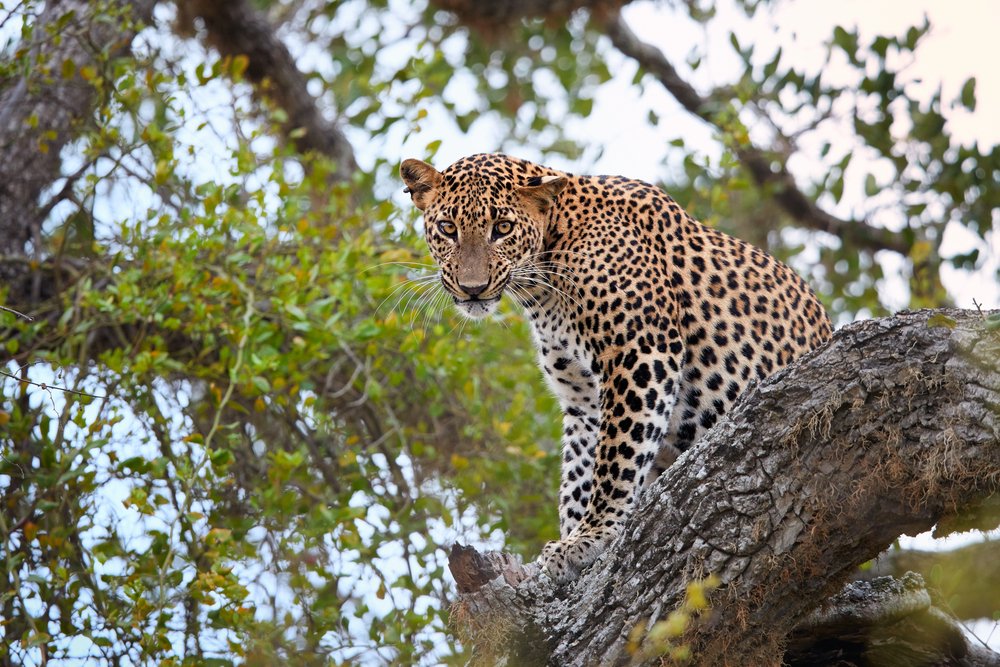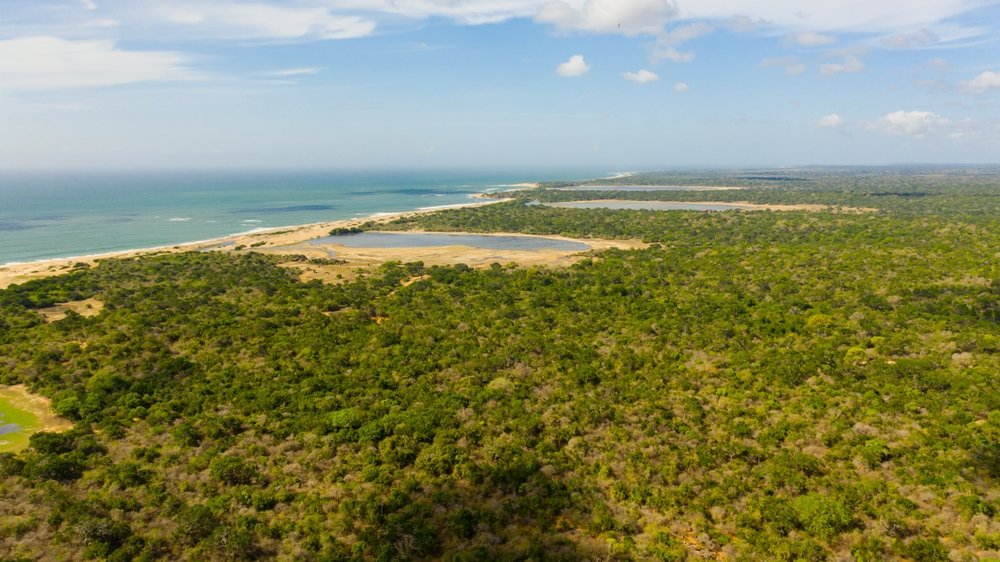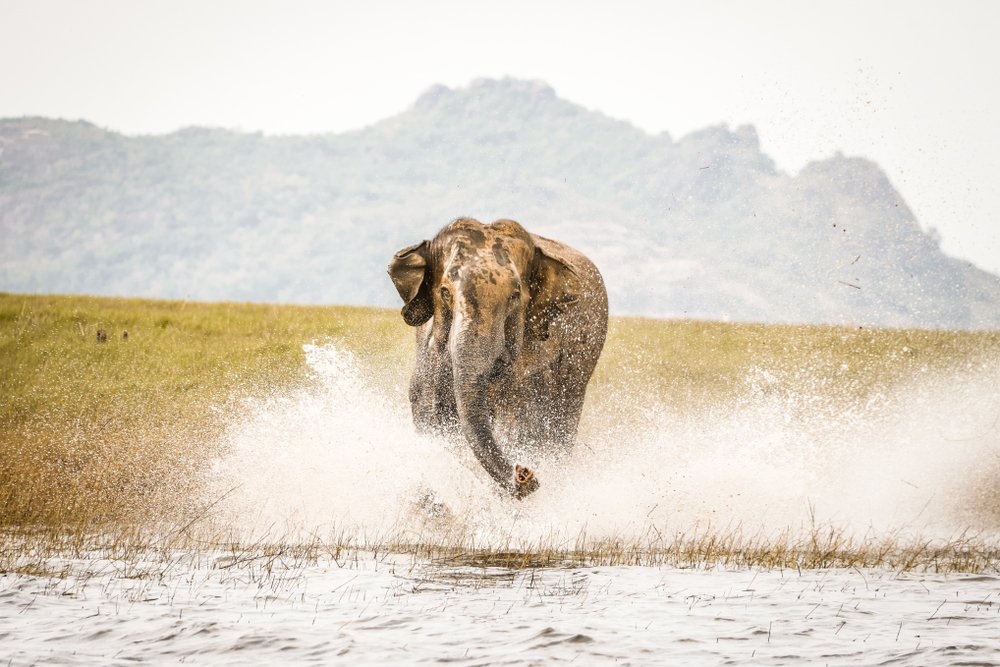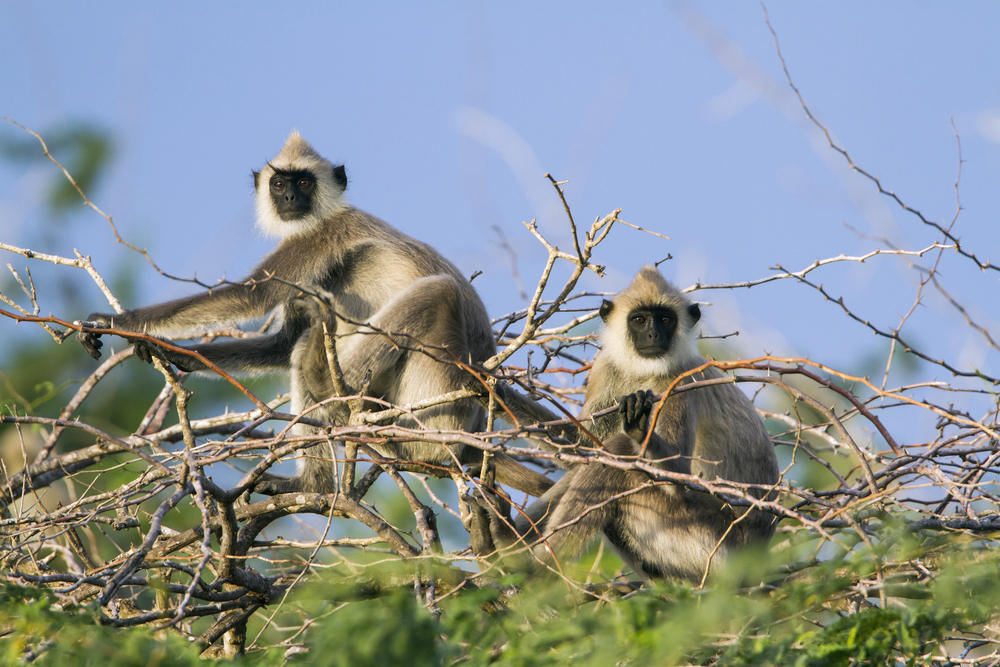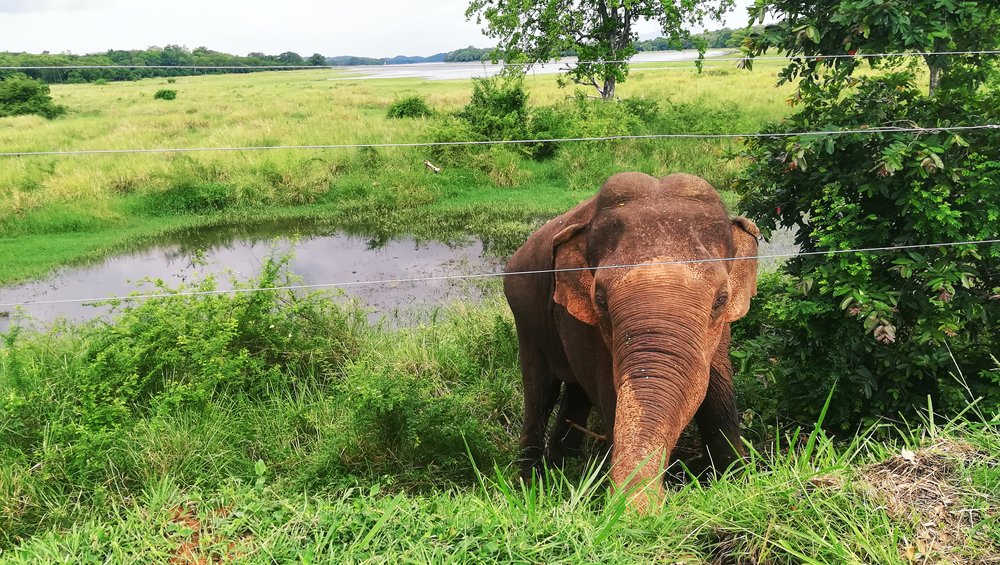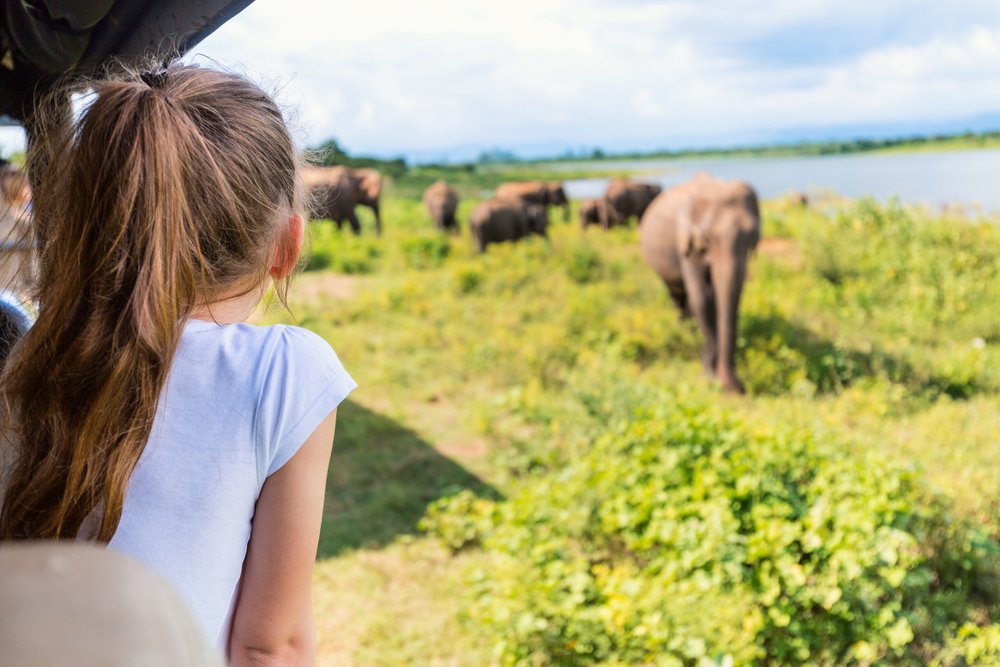
When travelling to the Asian splendour of Sri Lanka, your itinerary would be incomplete without visiting one of the country’s incredible Safaris. When we think of a safari, we typically think of Africa but consider the greatness of a Safari in Sri Lanka.
It is undoubtedly one of the most incredible things to do and places to visit in Sri Lanka, and there are many options when picking which safari in Sri Lanka to take. A guide covering all you need to know about Sri Lanka and showcasing the top safaris in Sri Lanka would simplify your life. Therefore, with that in mind, continue reading this guide to plan the ideal Sri Lanka safari vacation.
The 26 national parks of Sri Lanka are teeming with unique wildlife and plant life, some of which are native to the country. For example, the Sri Lankan leopard, elephant, and sloth bear are native to the nation, and they, together with the Blue Whale and Sperm Whale, comprise the country’s Big Five species, which draw crowds of tourists each year.
Contents :
1. Safari at Yala National Park
2. Safari at Udawalawe National Park
3. Safari at Wilpattu National Park
4. Safari at Kumana National Park
5. Safari at Wasgamuwa National Park
6. Safari at Maduru Oya National Park
7. Safari at Gal Oya National Park
8. Safari at Bundala National Park
9. Safari at Minneriya National Park
11. Safari at Lahugala Kitulana National Park
12. Safari at Horton Plains National Park
13. Safari at Kala Wewa National Park
14. Safari at Somawathiya National Park
1. Safari at Yala National Park
Yala National Park is one of Sri Lanka’s most visited national parks. This is owing to the number of Sri Lankan Leopards living in Yala. Block 1 has a population density of one leopard per square kilometre, making it a wildlife utopia.
It has an area of around 1,300 square kilometres and is home to various habitats found nowhere else in Sri Lanka. With vegetation that includes moist and dry monsoon forests, thorn forests, savannah grasslands, and fresh and saltwater wetlands, it’s no surprise that the Yala National Park has the ideal habitats for the country’s large number of endemic plant and animal species, making it one of the most popular wildlife safari destinations on everyone’s tour itineraries. This National Park has 44 documented mammals, including the Sri Lankan Leopard, Sri Lankan Sloth Bear, and Sri Lankan Elephant, as well as 215 species of birds, 46 species of reptiles, and 21 species of amphibia.
Four Entry Points to Yala:
The Park has four entrances. The gates at Palatupana and Katagamuwa leading to Blocks 1 and 2 remain the most popular. However, the two gates at Galge on the Buttala-Kataragama Road, which cover Blocks 3 and 5, are popular with tourists who wish to avoid contributing to traffic congestion. There have also been reports of leopard sightings along these paths.
Important (Elephants on the Road)
Keep an eye out for wild animals on the Buttala-Kataragama Road, especially elephants. This road runs through the Park, and some elephants have been known to solicit fruits from passing vehicles by standing across the street, permitting passage once appeased. Elephants, on the other hand, are well-mannered and will yield when a car approaches. Avoid presuming that every elephant that crosses the road is amicable to humans. Drive carefully and never get out of your vehicle.
Tissamaharama is home to many safari tour providers eager to take you on your once-in-a-lifetime Yala National Park safari adventure. A Yala safari vehicle may seat up to six people, and the safari trip operator will typically organize pick-up and drop-off at your hotel. Yala National Park may be explored as part of a jeep safari in the morning, afternoon, or the whole day.
By attending a morning safari, you will be picked up at your lodgings at about 05.00 to arrive at the Park’s gate before it opens at 06.00. Duration: 05:00 – 10:00, with a 3-hour stay at the Park.
According to most Yala safari rangers, there isn’t a substantial variation in animal sightings between the morning and afternoon safaris. Therefore, during my afternoon safari in Yala National Park, you should observe a wide range of animals and have a relaxing yet exciting experience. Duration: 13:00 – 18:00, with a 3-hour stay in the Park.
Entrance Ticket prices:
2. Safari at Udawalawe National Park
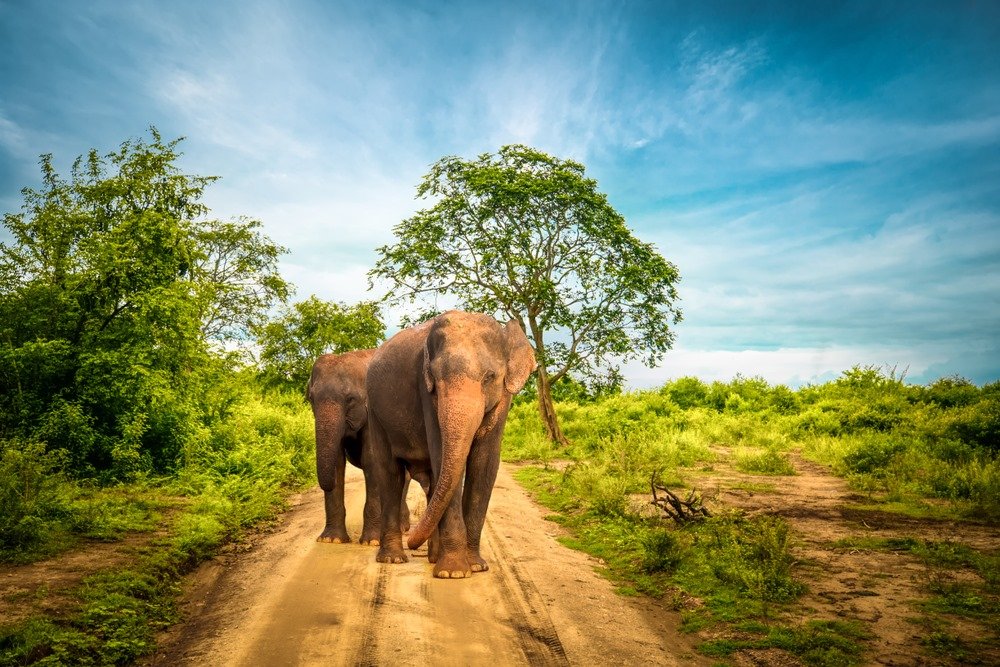
The Udawalawe National Park is Sri Lanka’s third most visited Park. Udawalawe’s diversified ecosystems support a broad range of creatures. The elephants, however, are the major attraction in Udawalawe, with a herd of 600 to 700 elephants thought to be residents of the Park. Many other species of Sri Lankan animals may be found at Udawalawe National Park, including the indigenous Toque Macaque and the Sri Lankan Leopard. Still, the latter is only spotted on rare occasions. The Sri Lankan Sloth Bear has also been documented, however, it is rarely observed. In addition, there are several bird species, some of which are endemic, fish, reptiles, and amphibians.
The Udawalawe National Park is located in Sri Lanka’s southern dry zone and encompasses roughly 31,000 hectares, giving sufficient possibilities for elephant safaris and watching the Park’s other Sri Lankan wildlife. The Park, which contains the Udawalawe Reservoir, crosses two provinces south of Sri Lanka. The Udawalawe National Park is renowned for its breathtaking natural beauty and is second only to the Yala National Park in terms of popularity.
Best time to visit Udawalawe National Park
Elephants can be observed annually in Udawalawe, while migrant birds can only be spotted from November to March. The most significant time to visit is during the dry season when elephants congregate at waterholes in enormous numbers.
You will be picked up from your accommodations at about 05.00 to reach the Park’s entrance before it opens at 06.00 if you choose to go on a morning safari. Duration: 05:00 – 10:00, including a 3-hour park stay.
You should see various animals and have a pleasant yet exciting experience on my afternoon safari in Udawalawe National Park. Duration: 13:00 – 18:00, including a 3-hour stay in the Park.
Entrance Ticket prices
3. Safari at Wilpattu National Park
Wilpattu is located on Sri Lanka’s west coast. In the centre of the Cultural Triangle, the Wilpattu National Park extends inland towards the historical city of Anuradhapura. The Park is in dry zone woodland, with a few floodplain lakes surrounded by majestic white dunes. It has incredible vegetation in vast stretches of forest and diverse animals.
The profusion of villus, or natural lake-like basins, is a topographical characteristic unique to this island area. All but two of the Park’s villus retain fresh rainwater and are home to a diverse assortment of resident and migratory waterbirds. Unfortunately, Wilpattu is also home to Sri Lankan Sloth Bears, critically endangered, with less than 1,000 remaining in the wild. Sloth Bears are most visible from June to July when the Palu Tree is in bloom. Seeing endangered species in the wild is a privilege that this National Park provides, one that you will remember for the rest of your life.
Wilpattu National Park is located 30 kilometres north of Puttalam (about 180 kilometres north of Colombo) and stretches from the northwest coast inland to the historic capital city of Anuradhapura (50 kilometres to the east of the Park), spanning an astounding 425 square miles. The route from Colombo goes through Negombo, Chilaw, and Puttalam, with a detour at Thimbiriwewa, at the 28th-mile mark on the Puttalam-Anuradhapura road. The Park office, where you may get a permit and a guide, is 8 kilometres from the turn-off. You may also go by helicopter, departing from either Bandaranaike Airport or Ratmalana and landing in Wilpattu. In addition, the Park may be reached by road from there.
This National Park is open all year; however, a visit between February and October is advised for the best safari experience.
Entrance Ticket prices:
4. Safari at Kumana National Park
Kumana National Park in Sri Lanka was renamed Kumana National Park in 2006 after being known as Yala East National Park. Birders who visit the Park are often astounded by the fantastic range of species that call Kumana home, as evidenced by the existence of 20 lagoons and tanks. These tanks are typically less than 2 metres deep, regularly inundated by seawater, and dot the Park’s landscape. The Kumana Bird Sanctuary, located inside the limits of the Kumana National Park, was designated a protected area in 1938 and is regarded as one of Sri Lanka’s most significant nesting sites.
Kumana National Park covers 35,664 hectares. The Park is bounded to the west by the River Kumubukkan Oya. Within the Park, a 200-hectare mangrove swamp known as “Kumana Villu” is periodically inundated by seawater. As a result, many water birds have been spotted breeding in this wetland.
Kumana has 255 bird species, making it perfect for bird viewing in Sri Lanka. Aside from the abundant birds, Kumana is also home to some of the creatures in the neighbouring Yala National Park, such as elephants and leopards. It is also said that 30 to 40 Sri Lankan elephants live in the Park, and they do cross into Yala.
The early morning safari begins at 6 a.m. and concludes at about 10 a.m., while the late afternoon/sunset safari starts at 3 p.m. and ends at 6 p.m.
Entrance Ticket prices:
5. Safari at Wasgamuwa National Park
Historical occurrences surround Wasgamuwa National Park since it was formerly a part of ancient Kingdoms about 2000 years ago. The National Park has remnants of both conflict and civilization. The remains of a massive canal built by King Parakramabahu 1 in the 12th century may be seen to the north of Wasgamuwa Park. Ancient pillars and ruins in the shape of stones may be discovered throughout the Park, and some of them can be observed on animal safari tours. Yudaganapitiya contains a battleground where King Dutugamunu and King Elara battled.
Wasgamuwa National Park is a wildlife paradise in Sri Lanka, home to numerous rare bird species such as the Blue-faced Malkoha, Jackerbin Cuckoos, Drongo Cuckoosand Black Wing Kites, to mention a few. The background to any wildlife tour is the presence of mammoth elephants that walk freely in the Park. Sloth Bears live there as well. The leopard is one of the safari tour’s highlights; although scarce and secretive, it leaves pug markings all over the roadways as a clear reminder of its concealed presence.
Like other national parks, two Sri Lanka Wildlife Safaris are offered daily. The early morning safari begins at 6 a.m. and concludes at about 10 a.m., while the late afternoon/sunset safari starts at 3 p.m. and ends at 6 p.m.
Entrance Ticket prices:
6. Safari at Maduru Oya National Park
The Maduru Oya National Park is located just outside the Wasgamuwa National Park and is a hidden gem. The Maduru Oya National Park is roughly 300 kilometres from Colombo, yet the journey will lead you to an unforgettable wildlife experience and ultimate safari holiday. It is a considerable expanse of over 58,800 hectares in Sri Lanka’s eastern region, home to animals, ruins, and engineering wonders. While the Park is in the dry zone, water systems account for approximately 15% of the land area, including the five reservoirs of Maduru Oya, Ulhitiya, Rathkinda, NDK, and Henanigala, as well as tributaries of the Mahaweli and Maduru Oya rivers.
What makes this Park unique is its variety and abundance of endemic and endangered species – and wildlife trips allow you to get up close and personal with them. Elephants are common in the Park, and herds may be regularly seen. The sloth bear, leopard, water buffalo, toque monkey, porcupine, spotted deer, sambar, Indian muntjac, fisher cat, jackal, wild boar, and numerous other smaller species are also inhabitants. In addition, this Park has been identified as a home for the slender grey loris and the European otter.
Not to be outdone, the avifauna is likewise incredibly diverse and visually magnificent. The white-bellied sea eagle, great cormorant, painted stork, black-hooded oriole, woodpecker, Sri Lanka’s national bird – the jungle fowl, and malkoha, among others, make their presence known – though not always audible. Yet, surprisingly, the Asian openbill, spot-billed pelican, and Oriental darter, as well as the black-headed ibis and Eurasian spoonbill take the centre stage near the reservoirs.
Two Wildlife Safaris are available daily, much as in other national parks. Early morning safaris begin at 6 a.m. and end at 10 a.m., while late afternoon/sunset safaris begin at 3 p.m. and end at 6 p.m.
Entrance Ticket prices:
7. Safari at Gal Oya National Park
Gal Oya National Park is a 25,900-hectare evergreen forest and savannah area. Your weird voyage here reveals the possibilities of varying hues of green in grasses at various stages of life, stunning sunsets flowing over the earth in almost actual colours, and a moon so enormous that you feel closer to the universe.
The Gal Oya National Park is the foremost one in Sri Lanka, where a boat safari is available. There are numerous little islands to visit because it borders a reservoir, but the actual draw is the regular sightings of elephants swimming from one island to the next. Sri Lankan elephants can swim well and use their trunks as snorkels. They can also swim for vast distances. It is said that the first elephants to inhabit Sri Lanka floated from India and settled on the island!
This is different from your typical wildlife trip; game drives and boat safaris allow you to explore your new home in the Gal Oya National Park by land and water. Jeep or boat safaris will enable you to see anything from an elephant grazing the grassland to swimming between islands.
Entrance Ticket prices:
8. Safari at Bundala National Park
This National Park has been designated as an exceptional “Important Bird Area” in the marshes of South India and Sri Lanka. There are 197 bird species known here, with wetland environments housing over 100 species of water birds, half of which are migratory. 58 of the 197 avifaunal species are migratory.
The Bundala National Park is the Greater Flamingo’s final known sanctuary, and enormous flocks may be seen throughout the migratory season. Bundala is Sri Lanka’s sole National Park, where visitors may see both types of crocodiles found on the island. There are a lot of Estuarine and Mugger Crocodiles here. The Estuarine Crocodile is the biggest of all reptiles, with males reaching 7m in length and weighing up to 1,200 kilos, while females are much smaller, going a maximum length of just 3m.
Bundala, which covers an area of 6216 hectares, is located around 250 kilometres southeast of Colombo in the Hambantota district. The Park is located in Sri Lanka’s southeastern desert zone, with a general climate that may be hot and dry. The geography is mostly flat, with dunes along the shore, and the vegetation is dry, primarily thorny scrublands and lagoons. A total of 383 plant species from 90 families have been identified here. Hydrilla grows abundantly in lagoons such as Embilikala and Malala, while reed beds of Water Hyacinth, Water Lilies, and Typha Angustifolia may be found in marshes and streams. The Park is also home to 32 distinct animal species, five vulnerable.
Entrance Ticket prices;
9. Safari at Minneriya National Park
The world’s largest known gathering of Asian elephants is found in Minneriya National Park. During this time, groups of up to 350 elephants have been spotted in the 8,890-hectare Park near the Minneriya Tank. According to some sources, there are up to 700 elephants. During the dry season, wild elephants move from Wasgamuwa National Park to Minneriya National Park in search of food and shelter around August and September each year. Tourists mainly come to Minneriya National Park to see elephants, especially during the dry season.
The Park is a significant home for two rare monkeys in Sri Lanka: the purple-faced langur and the toque macaque. The Park is frequented by large herbivorous animals such as Sri Lankan sambar deer and Sri Lankan axis deer. Minneriya is home to rare and endangered animals such as the Sri Lankan leopard and the Sri Lankan sloth bear. Minneriya is one of the regions in Sri Lanka where the slender grey loris is said to be found.
Minneriya National Park is 182 kilometres from Colombo in Sri Lanka’s North Central Province. Habarana and Polonnaruwa are the closest significant cities to Minneriya National Park. The Minneriya National Park is centred on the rebuilt, enormous old Minneriya Rainwater Reservoir, which irrigates a large portion of the Polonnaruwa district. All year, visitors to Minneriya National Park, part of the elephant corridor connecting Kaudulla and Wasgamuwa National Parks, may view elephant herds. However, the most significant time to visit Minneriya National Park is from May to October, when the world-famous Great Elephant Gathering of Asian wild elephants takes place.
Like in other national parks, two Wildlife Safaris are provided every day. Safaris start at 6 a.m. and conclude at 10 a.m., while late afternoon/sunset safaris start at 3 p.m. and end at 6 p.m.
Entrance Ticket prices:
10. Safari at Hurulu Eco Park
The Hurulu Forest Reserve in Sri Lanka is a functioning ecosystem with a diverse animal population that was classified as a biosphere reserve in January 1977. This region is 10,000 hectares in size. This Park was created from an ancient teak plantation that was converted to grassland.
The Sri Lankan elephant relies heavily on the forest reserve. The species is noted for its migratory behaviour, which occurs mainly during the dry season between the woodlands around the area. There are several additional protected sites surrounding Hurulu Forest Reserve. Nature reserves in Ritigala, Minneriya-Giritale, and Mahaweli flood basins.
During the rainy season, the Minneriya and Kaudulla tanks suffice, decreasing the elephants’ access to grasslands. During these periods, elephants visit Hurulu Wewa to graze on the ‘elephant grass’ that grows abundantly in this Park. For most of the year, the various small herds of Elephants that inhabit the surrounding region congregate on the open bed of the main tank to graze, drink, wash, and interact. A Hurulu Eco Park safari is an exciting event that no elephant lover should miss if they are in Sri Lanka from April / May to September.
Entrance Ticket prices:
11. Safari at Lahugala Kitulana National Park

Located in the arid zone (the closest city is Pottuvil), dry evergreen forests dotted with rosewoods and satinwoods are a familiar sight inside the Park; Beru grass is the primary food source for the elephants, which grows thanks to the three reservoirs healthily. The tank also draws various indigenous aquatic birds, including egrets, pelicans, and purple herons, to mention a few.
Entrance Ticket prices:
12. Safari at Horton Plains National Park
Horton Plains National Park, a UNESCO World Heritage site, is located in Sri Lanka’s Central Highlands at an elevation of up to 2,300 metres. This setting contributes to the Park’s distinctiveness, and it is unlike any other national park in Sri Lanka, drawing a varied diversity of birds and animals. In addition, because of its proximity to the tea region, this Park should be on the bucket list of any wildlife enthusiast interested in bushwalks and walking safaris.
This biodiversity hotspot spans 3,160 hectares, with roughly 60% of the area covered by montane grasslands and the remainder by subtropical montane evergreen forests. Half of the woody plants are only found in Sri Lanka. Frequent cloud cover reduces sun exposure, resulting in a temperature range and flora and animals unique to the Park.
Rainfall falls from May through September during the southwest monsoons, making the Park foggy and wet. The Park’s lower-lying parts receive substantially more rain than the rest. The Park serves as the source of three major rivers in the country. It is also a significant watershed with slow-moving streams, soggy bogs, and waterfalls. Horton Plains is home to 24 different animal species and 87 bird species. This is also a vital bird location, attracting migratory birds from the Northern Hemisphere throughout the winter. In addition, the Park is home to around 15 amphibians as well as unique reptiles.
Horton Plains is a birder’s dream, home to 21 endemic species, such as the Sri Lanka blue magpie, dull-blue flycatcher, Sri Lanka white-eye, Sri Lanka spurfowl, and Sri Lanka bush warbler, to mention a few.
The ideal months to visit are from January to March when the weather is less foggy. Without the mist, one can view the most beautiful scenery, including villages, tea plantations, and even the southern coastline, which is 100 kilometres distant. The trail is best made first thing in the morning, beginning at 6 a.m. at the park gate. A guided walking track will lead you through spectacular montane meadows and cloud forests – or vice versa, depending on whether you want to travel clockwise or anticlockwise. The walk offers several photo possibilities, including tree ferns, meadows, and a sambar deer standing without uncertainty.
Entrance Ticket prices:
13. Safari at Kala Wewa National Park
This forest area, declared a national park in 2015, surrounds the massive Kalawewa and Balalu Wewa ponds built by King Datusena in the 5th century and is another place where herds of Asian elephants can be sighted. The pack in this Park is notable for its large number of tuskers (male elephants with ivory). Tuskers are rare in Sri Lanka, and only a tiny fraction of pachyderms bearing ivory are detected; hence their genetic structure is unique. Furthermore, the Park includes a stunning environment dotted with enormous Kumbuk trees and hundreds upon thousands of open-billed storks during specific dry seasons.
The Park is only accessible during the dry season when the water levels decrease and verdant grass glades emerge, which are much sought after by elephants. This also makes it accessible by jeep. This is an excellent option for seeing an elephant gathering away from the crowd in other parks.
The Thalangama Lake region is home to over 100 species of wetland birds and common garden birds, including Herons, Water hens, Egrets, Kingfishers, Teals, Gulls, Bulbuls, Swamp hens, Swallows and Storks. Numerous species of Butterflies and Dragonflies may also be found here. Several Purple-faced leaf monkeys and other reptiles can also be discovered here. You can explore this national park with safari jeeps and experience guides, and the park is open from 6 a.m. to 6 p.m.
Entrance Ticket prices:
14. Safari at Somawathiya National Park
On August 9, 1966, the park was declared a wildlife sanctuary. The Somawathiya National Park is 266 kilometres (165 miles) north of Colombo. It is located in the deltaic flood plains of the Mahaweli River (Sri Lanka’s longest river), where the river splits into two branches that run into Koddiyar Bay and Verugal Oya, which finally reach the ocean.
Because of its position, the Park is home to some of the most spectacular wetland habitats on the island, known as ‘villus’ in the Mahaweli flood plains. These are natural inland water bodies characterized by aquatic plants and water-tolerant grasses. Somawathiya protects a rare environment with riverine villus and flood plains.
The ecological significance of Somawathiya is mainly due to the presence of elephants, which are believed to number over 400 within the Park and its near surroundings, and the abundance of bird life. The Golden Jackal, Fishing Cat, Rusty-Spotted Cat, Leopard, Wild Boar, Sambar, Water Buffalo, Porcupine, and Black-Naped Hare are among the mammals to keep an eye out for. Generally, the floodplain wetlands offer a diverse and intriguing avifauna. Around 75 migratory species are known to winter in the Somawathiya wetlands, including birds such as the Garganey, Marsh Sandpiper, Pintail Snipe, and Whiskered Terns. The Painted Stork is one of the species that live there.
Entrance Ticket prices:
15. Safari at Madhu Road National Park
Madhu Road National Park is located in Sri Lanka’s Northern Province, some 25 kilometres east of Mannar. Initially, this National Park was a wildlife sanctuary established on June 28, 1968. The general area of the Madhu Road National Park is 26,677 hectares (65,920 Acres). Following the civil conflict in Sri Lanka, the government decided in 2015 to convert most wildlife sanctuaries to national parks, including Madu Road Wildlife Sanctuary, Chundikulam Wildlife Sanctuary, and Delft & Adam’s Bridge. Madhu Road Wildlife Sanctuary was renamed Madhu Road National Park on June 22, 2015, following a decision made by the Government of Sri Lanka in conjunction with UNDP.
Madhu Road is home to various birds, including Asian palm swift, jungle Prinia, ashy-crowned sparrow-lark, ashy prinia, Alexandrine parakeet spotted dove, Sri Lankan junglefowl, tawny-bellied babbler, Sri Lanka grey hornbill, white-bellied sea eagle, Asian koel, baya weaver, ashy wood swallow. This park also has elephants, bears, jackals, buffalos, and several deer and monkeys.
Entrance Ticket prices:
16. Safari at Kaudulla National park
Kaudulla is a newly constructed national park in the centre of the cultural triangle, proclaimed in 2002. The park spans 6656 hectares and is linked to the adjacent Minneriya Wildlife Park by a corridor. This park offers fantastic opportunities to see elephants and other animals. Extensive grasslands around the Kaudulla reservoir, woodland, and scrubland characterise the terrain. The park’s centrepiece is the Kaudulla reservoirs, an old irrigation pond. Historically, Kaudulla was one of King Mahasen’s 16 irrigation tanks in the region. It was rebuilt in 1959 after a period of neglect. It is home to many plant and animal species, including giant animals, fish, and reptiles.
Kaudulla is also helping many elephants that are part of the “elephant gathering” in Minneriya National Park. Because the two parks are so near together and have connected forest ecosystems, elephants readily roam between them. Kaudulla is also the eastern gateway of Somawathiya National Park. During the dry season, Sri Lankan elephants migrate to the Minneriya tank to drink and forage. The elephants migrate to the Kaudulla tank in late September or early October in search of additional water and food. September and October are ideal for visiting Kaudulla to see a massive herd of elephants.
Entrance Ticket prices:
Article by
Ravindu Dilshan Illangakoon
As co-founder and Head of Content at Sri Lanka Travel Pages, I ensure that every blog post we publish is AMAZING.

